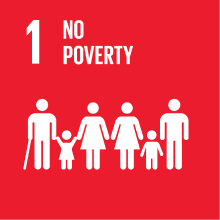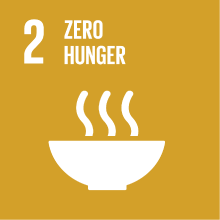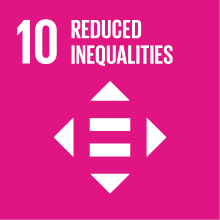HISTORY OF EASTERN EUROPE
- Academic year
- 2025/2026 Syllabus of previous years
- Official course title
- STORIA DELL'EUROPA ORIENTALE
- Course code
- LT8020 (AF:575196 AR:322441)
- Teaching language
- Italian
- Modality
- On campus classes
- ECTS credits
- 6
- Degree level
- Bachelor's Degree Programme
- Academic Discipline
- M-STO/03
- Period
- 2nd Semester
- Course year
- 2
Contribution of the course to the overall degree programme goals
The course will offer the possibility of enriching with an historical component the study of the languages and cultures especially of the Slavic regions. The geographical focus on Eastern Europe constributes to the teaching programmes specifically conceived for BA students interested in deepening their knowledge about that area.
Expected learning outcomes
- to familiarize with and to be able to understand the main historical events and issues of the history of Russia and the USSR in the period between the mid-9th century and the end of the 20th century, with some comparative insights into the history of Central- and South-Eastern Europe;
- to be able to apply this knowledge to a critical understanding of the present time in terms of continuities/changes and public use of history
- to reinforce and develop the ability of critically reading the historical academic literature, with particular attention to the international scholarship about Russia/USSR and Eastern Europe in the 19th-20th century
- to refine your communication skills
Pre-requirements
Contents
These topics will be approached in a comparative perspective, with particular regard to Central-East and South-East Europe. We will consider the Habsburg and the Ottoman Empire, the post-imperial nation-states, and the socialist countries emerged in this region after the Second world war.
Referral texts
- Giovanna Cigliano, La Russia contemporanea. Un profilo storico, Roma, Carocci, 2013 (chapters 1-14).
- Francesco Guida, L’altra metà dell’Europa. Dalla Grande guerra ai giorni nostri, Laterza 2015 (chapters 1 and 2).
further compulsory readings:
- Paul Bushkovitch, Breve storia della Russia. Dalle origini a Putin, Torino, Einaudi, 2013 (chapter 14).
- Andrea Graziosi, L’Unione sovietica, 1914-1991, Bologna, il Mulino, 2011, pp. 129-157.
- Christopher R. Browning and Lewis Siegelbaum, “Frameworks for social engineering: Stalinist schema of identification and the Nazi Volksgemeinschaft”, in Michael Geyer, Sheila Fitzpatrick (eds.), Beyond totalitarianism: Stalinism and Nazism compared, Cambridge, Cambridge University Press, 2009, pp. 231-245 (only the parts about the USSR).
- Antonella Salomoni, “La Shoah nell’Europa orientale: testi, immagini, luoghi. Una riflessione e un progetto”, 2020, Novecento.org, n. 13, http://www.novecento.org/la-didattica-della-shoah/la-shoah-nelleuropa-orientale-testi-immagini-luoghi-una-riflessione-e-un-progetto-6369/
Schenk, Frithjof Benjamin, "Mental Maps: The Cognitive Mapping of the Continent as an Object of Research of European History", in: European History Online (EGO), published by the Leibniz Institute of European History (IEG), Mainz 2013-07-08. URL: http://www.ieg-ego.eu/schenkf-2013-en
It is recommended to everyone to consult the materials - ie. historical maps, visual sources, integrative texts, useful links etc. - published on the moodle platform (https://moodle.unive.it/ ).
Further optional readings, for approaching the region with a long-term perspective (for bibliographical references in English, please contact the teacher):
Armando Pitassio, Corso introduttivo allo studio della storia dell'Europa orientale, Perugia, Morlacchi Editore, 2011.
Giulia Lami, Storia dell'Europa orientale. Da Napoleone alla fine della Prima guerra mondiale, Firenze, Le Monnier, 2019.
Egidio Ivetic, I Balcani. Civiltà confini, popoli (1453-1912), Bologna, il Mulino, 2020.
Stefano Bottoni, Un altro Novecento. L’Europa orientale dal 1919 a oggi, Roma, Carocci, 2011.
Assessment methods
1) to verifying the knowledge of the main historical facts and processes, as well as the most relevant personalities, with relation to the historical period under examination
2) to verify the analytical skills and the ability of the student to formulate critical reflections about the historiographical issues emerged during the lessons
3) to verify the knowledge of some elements of historical comparison in the framework of the East-European space during the time examined by the course.
The examination is written (duration: 1½ hours) and one further goal is to verify the written communicative skills of the student. The exam is not open books. Personal notes are not allowed.
Type of exam
Grading scale
Between 18 and 22 points the result is considered sufficient; between 23 and 26 it is good; between 27 and 29 it is very good; with a score of 30 points it is excellent.
Teaching methods
2030 Agenda for Sustainable Development Goals
This subject deals with topics related to the macro-area "Poverty and inequalities" and contributes to the achievement of one or more goals of U. N. Agenda for Sustainable Development




